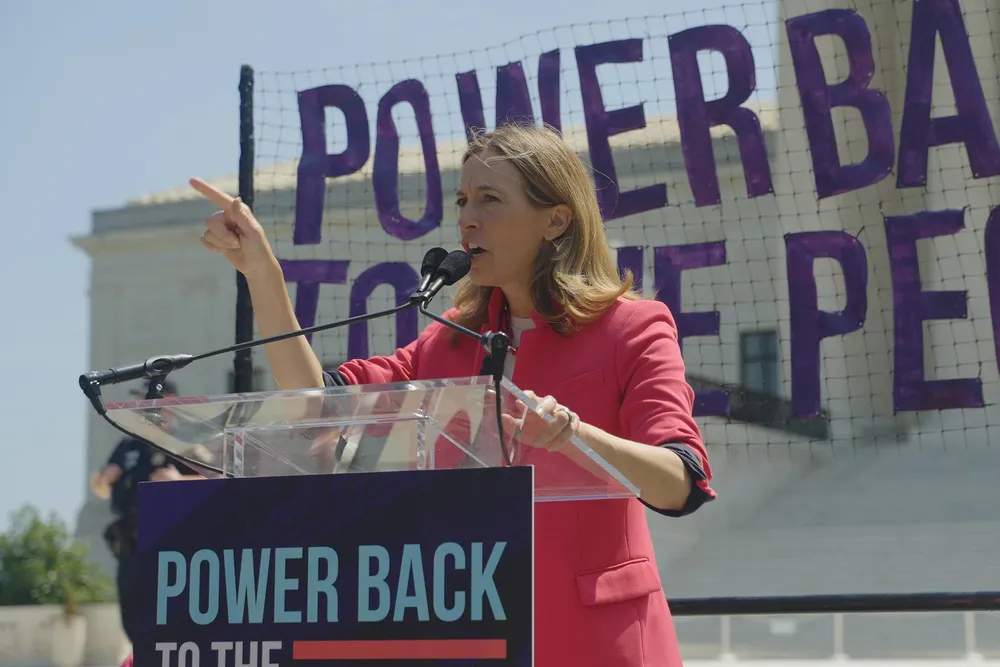Offshore wind and Trump put US state governor’s race in 'uncharted territory'
Surging power prices blamed on sector are boosting Republican candidate in traditionally Democratic stronghold

Republican candidate for New Jersey governor Jack Ciattarelli has put surging power prices front and centre of his campaign in this high-cost state.
Ciattarelli puts blame for energy price spiking more than 20% this summer squarely on outgoing Democratic governor Phil Murphy’s failed offshore wind ambitions.
Murphy bet heavily on offshore wind to underpin the state's energy transition only to see it blow up in his face. Nearly 4GW of contracted capacity has been cancelled, while another 3.7GW is on ice, frozen by President Donald Trump’s permitting ban.
Murphy and Democratic candidate Mikie Sherrill “were obsessed with failed offshore wind farms... forcing us to import electricity from other states and pay through the nose for it." Ciattarelli said in a 1 August press release. “As Governor, I'll ban offshore wind,” Ciattarelli said.
The message may resonate with voters where a survey by state university Rutgers’ Eagleton Centre for Public Interest Polling in June found 85% of New Jerseyans were dissatisfied with affordability and the cost of living.
Ciattarelli has closed a 20-point polling gap with Sherril in recent weeks to single digits.
The President made his now legendary vow to stop offshore wind “on day one” of his term on a campaign stop in the coastal resort town of Wildwood in May 2024 – a promise he kept with his Inauguration Day memorandum freezing sector leasing and permitting.
Trump effect
Trump's support may be more hindrance than help, though, in a campaign where national issues and the President’s unpopularity are outweighing local concerns. Some 60% of New Jerseyans are dissatisfied with the President, higher than the national average.
New Jersey reliably votes for Democrats in national elections, but in gubernatorial races typically flips from Democrat to Republican. Since 1945, the state has alternated between parties every four to eight years, with seven Democrats and six Republicans holding the office.
“Sherrill is the front runner because there are still a lot more Democrats than Republicans in New Jersey, and voters aren’t paying enough attention to the race to go much beyond partisanship,” said Dan Cassino, professor and executive director of FDU Poll at New Jersey’s Fairleigh Dickinson University.
“We've never had a situation where you have a full-term Democratic governor followed potentially by another Democratic governor,” he said. The “Trump backlash” could help “push the turnout for Democrats, and then help push Mikie [Sherril] through.”
Sherril’s victory in the 4 November contest – one of only two governor’s races this year along with Virginia – would be good for any future offshore wind development in the state.
As a Congressional representative for the state, Sherril said New Jersey is “perfectly positioned to shape the future by becoming a global leader in the renewable offshore wind space.”
New Jersey wind
New Jersey is perhaps the starkest example of the rise and fall of offshore wind under the administration of former President Joe Biden.
Galvanised by Biden’s double-digit national target, Murphy initially set a 7GW state goal, then upped that to 11GW. The state built the nation’s first greenfield marshalling hub, the New Jersey Wind Port, costing by some estimates nearly $1bn, and directed hundreds of millions more towards a monopile making factory.
It was skyrocketing inflation rather than Trump that first set back the sector in 2023, though, as Orsted scrapped its 2.25GW Ocean Wind 1 & 2 arrays over surging costs.
The 1.5GW Atlantic Shores array hung on for years despite an offtake contract that was wildly underpriced in the post-inflationary market, even after joint venture partner Shell backed out earlier this year, leaving French utility EDF to go it alone.
Trump’s Environmental Protection Agency eventually pulled a key approval, effectively killing it. The New Jersey Board of Public Utilities (NJBPU) finally pulled the plug this month by cancelling its offtake, formally stilling the once vaunted array.
Meanwhile, Murphy also oversaw the closure of the 625MW Oyster Creek nuclear power station and several coal-fired power plants amounting to nearly a gigawatt of capacity.
Delayed offshore wind power and cancelled coal and nuclear capacity preceded a generational surge in power demand. New Jersey is among regional transmission operator PJM’s 13-state coverage area that is experiencing some of the fastest load growth in the nation, driven primarily by ramping data centres. Load is forecasted to see annual 5% increases through 2030 across PJM's network.
PJM under fire
The grid operator is widely seen to be behind the curve on ramping demand and its capacity market auction prices rocketed 833% last year alone. Available generation assets skew heavily towards coal and natural gas and have not kept up with surging demand,
NJBPU has initiated actions to withdraw from PJM's market, but this would require assent of all the other states is widely seen as unlikely.
The state could resume offshore wind development under supportive leadership, according to New Jersey Economic Development Authority (NJEDA) president Tim Sullivan. NJEDA spearheaded offshore wind public investment in the state under Murphy.
“We are not giving up on wind,” Sullivan told a conference in May. “We aren't in a place right now from a federal policy alignment and a marketplace perspective to do that, and that is disappointing.”
(Copyright)